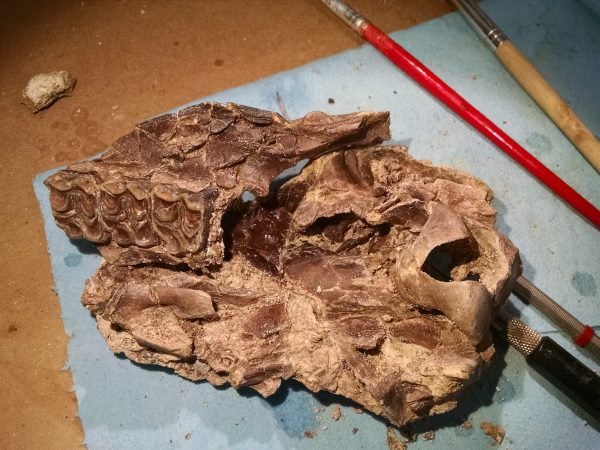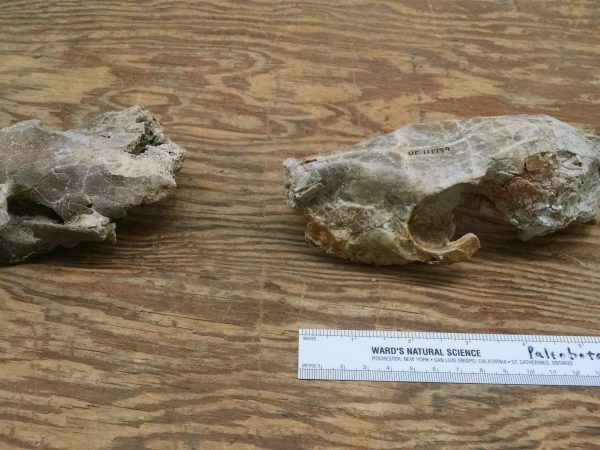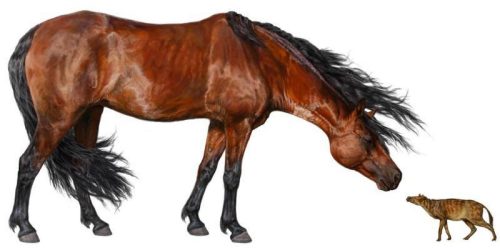
Let’s imagine for a moment the great western plains of North America. The sky is blue, up above seems to be an eagle soaring with the wind. Towards the horizon all the eye can see is a mountain chain enclosing this immense valley. Suddenly in the distance there is a herd of horses galloping with pride towards your direction. Your first thought when you see them is that they must be quite far, but you begin to notice that as they get closer their size seems to be smaller. They are now galloping next to you and these horses are about 60 cm tall!
I’m betting that when I mention a “herd of horses” most of you thought of a modern horse and if you don’t have a paleontological background you might be quite confuse with the “60 cm” size I just told you these horses are. Nowadays it is not possible to see a horse this size, but during the middle Eocene to the early Oligocene this was one of the size range they had.
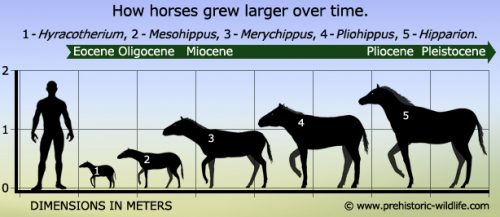
A few weeks ago working in the prep lab at the museum I had the chance to clean a skull of a Mesohippus sp. This is an extinct genus of early horse that live approximately about 30 to 40 million years ago. Horses belong to the group Perissodactyla (meaning “odd-toed”) and since their appearance during the middle Eocene to the present paleontologist have studied their entire evolutionary pattern.
Horses have rapidly evolved to their need of survival; they evolved from pentadactyl (five-toed) to monodactyl (one digit). Mesohippus sp. is considered one of the most important species of the horse evolution having only three digits because it became the boundary between species of five toes to one digit.
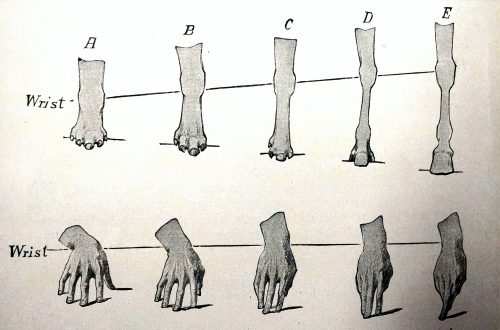
The skull that I was cleaning was collected from Thomas Farm. It had already been extracted from the jacket but the detailed cleaning had not been conducted at the time. This specimen is extremely fragile making it very difficult to prep. Even by touching the skull it would crumble. The reason for this was cause by the deformity that the skull underwent during fossilization. The dig site at Thomas Farm used to be an ancient sinkhole and it is most likely that the pressure of depositing sediment might have cause the crushing of the skull.
Before I could even begin to remove the remaining matrix from the specimen I had to reinforce the entire skull with B-72, which is a type of glue that we use to repair the fossils. When that was done I commence to extract the remaining matrix, but I had to be very careful because most of the matrix was actually holding some of the peaces of the skull together. Even though this specimens is incomplete it is vital in the understanding of these extraordinary creatures in their evolution to the majestic horses of today.
